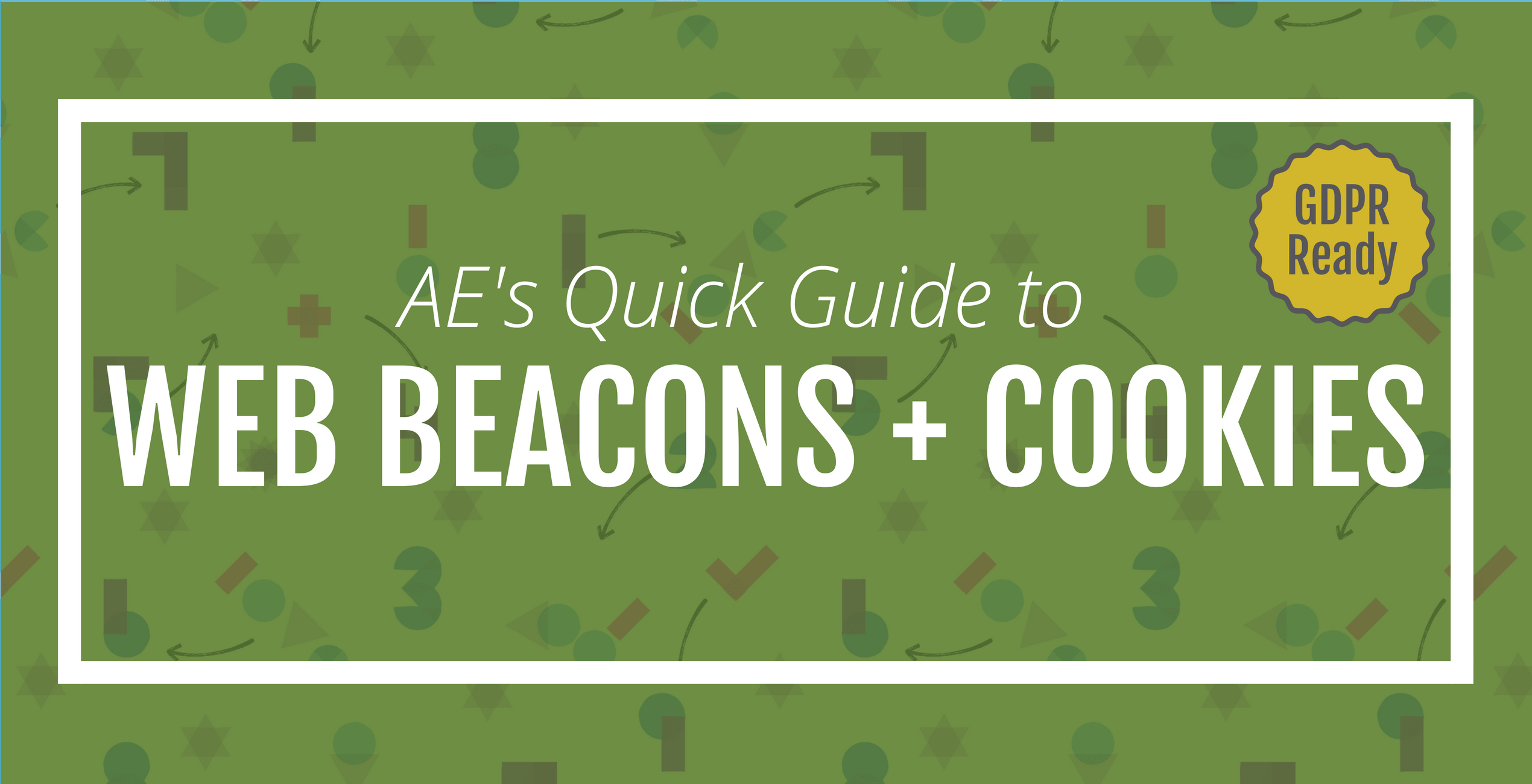This post is part of our series: Find Out Fast If Your Business is GDPR Ready. Our goal is to help businesses make sense of privacy and data. AE is your Babel Fish for GDPR Legalese.
To fully understand what’s happening in the world of GDPR and customer data, you’ll want to have a grasp of what web beacons and cookies are and how they work. Here’s our quick breakdown.
Beacons and cookies and web, oh my!
Web Beacons
Web beacons are often referred to as pixels that get tracked. They are small transparent gifs that live on websites.
When you visit a webpage that has a beacon, you download the pixel. Now the site with that beacon knows things like your IP address and your country.
Cookies
The information gathered by the web beacon is usually paired with a cookie, so now the business knows you visited and they can re-target you specifically with ads. We all know those annoying ads you see over and over. I looked at that luggage website for 5 seconds and now all I see is ads for rolling suitcases.
Cookies are usually used to help your browser remember you’ve been there before by storing your account information. For example: you log into Gmail in the morning, around lunch you close your browser, you come back to your Gmail page in the afternoon and you’re already logged in. Cookies don’t normally store any personal information about you, so you can’t be identified by it.
***

